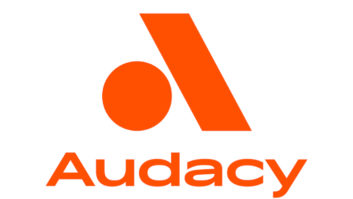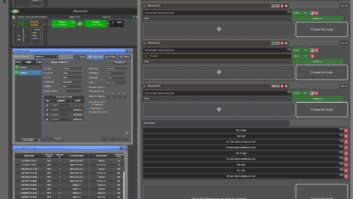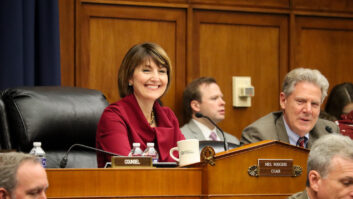Proponents Believe Documentation Software Will Make Facility Design Faster, Gear Shopping Cheaper; Manufacturers Say ‘Show Me’
INDIANAPOLIS The Society of Broadcast Engineers is trying to convince equipment manufacturers to adopt a standard for “Engineer-Friendly Documentation.”
While engineers drafting the standard are enthusiastic about its potential to streamline facility design, manufacturers have been slow to respond.
David Baden, chief technical officer at Radio Free Asia, heads an SBE task force of engineers and manufacturers drafting the EFD specification.
“We’re slapping the baby, but it’s not crying yet,” he said to describe EFD.
EFD is intended to make it easier for an engineer to design a facility and choose the right equipment for it. Richard Farquhar, former chairman of the 19-member EFD Task Force, said, “Our entire goal is that a staff engineer, radio, TV, post-production, whatever, can go to an EFD-friendly server and pull down data so that he can do his daily job.”
Farquhar is president of RAF Consulting Inc. He said the current wave of digital TV construction and the potential for thousands of digital transmitter projects at radio stations make the EFD initiative timely.
Electronic tools aid design
Yet the digital transition for radio and TV comes as engineering staffs have been reduced due to station consolidation.
“Our staffs tend to be smaller,” said former SBE President Andy Butler. “We’re having to outsource more of our design work, and we’re having to do more design work with fewer people in shorter periods of time. More and more we’re using electronic tools in our design process. All of this simply means that we need to be able to get information quickly and easily,” Butler said
The data at the core of EFD would reside on a database maintained by SBE, but it would come from the manufacturers.Using an SBE-designed template, the manufacturer creates a file in Extensible Markup Language, or XML, containing the complete electrical and physical specifications of each piece of equipment the company builds. The file would be uploaded to an online database maintained by SBE or another neutral party.
An engineer designing a facility could import the file into a variety of devices, from a personal digital assistant such as a Palm Pilot to a computer running a computer-assisted design application such as AutoCAD.
Baden saidthe engineer would begin using EFDby querying a database on the SBE Web site.
“If you’re looking for, say, a digital distribution amplifier for video, you click on the manufacturers (and) compare the prices. When you find the one you want, you just do an XML stream right into the your (CAD) drawing.”
The engineer’s CAD program would immediately flag any incompatibilities, such as mismatched connectors, input/output impedances or signal levels.
How are manufacturers responding to the SBE’s initiative? That is a question of perspective.
On one hand, EFD committee member Steve Lampen said SBE distributed about 1,000 CD-ROMs containing the EFD specification and a simple program to generate EFD files during NAB2001.
On the other hand, Baden said only one manufacturer, Broadcast Electronics Inc., has submitted EFD-compliant files to the SBE database.
“Everybody’s interested in it,” Baden said “(But) the response is less than enthusiastic.”
Easier comparison?
Baden believes some manufacturers may be reluctant to produce information in a format that streamlines comparisons between their products and a competitor’s.
“You get a large manufacturer, they’re selling such a wide product line with so many products in competition with themselves, why would they want to move to a format that would make it easier to compare?”
Such reluctance may be short-sighted, saidLampen, a technology specialist with Belden Wire and Cable Co. and a columnist for Radio World.
EFD is really “a great deal for manufacturers,” hesaid. “This will differentiate a firm that does have EFD from one that doesn’t, simply because they’ll be able to bid and do quality work at a considerable savings because they don’t have to do all this research, or in some cases guesswork.”
Part of the reason for the potential cost savingsis that EFD will include detailed specifications not normally found in conventional catalogs or specificationsheets, Lampen said.
“For instance, in the wire and cable side of things, it might load up something like bend radius, something that’s not listed in the catalog. And if they bent a wire tighter than the bend radius (during the design phase), there would be a little flag that would come up saying you’ve exceeded the bend radius of this cable.”
The presence of engineer-friendly documentation might even become a competitive advantage for an equipment manufacturer, said Farquhar.
“When you start doing diagrams and designs, you are actually not partial to particular brands of equipment. You want to put in what is best for the customer,” he said. “(But) the more information is available to us, the more likely that piece of equipment is included in the design.”
Farquhar and Lampen said about a dozen companies have expressed interest in participating in EFD.
Lampen said his employer, Belden, is “about 85- to 90-percent committed” to participating. However, the company is unlikely to create an EFD file for each of its 4,500 products.
“It’s fairly impossible for us to put them all in the database for EFD to use, so we’re probably going to do this in stages, and start with maybe the top 100 broadcast products. Once that’s in line, then every few weeks we’ll add another 50 products or that kind of thing,” he said.
A spokesman for console and digital router manufacturer Wheatstone Corp. was concerned that the EFD standard might become a moving target for manufacturers.
“We believe the concept is a good one, but question the need to create a new protocol just to share information on a common template,” said Michael Shane.
“Once this new ‘system’ was up, running and debugged – after how many revisions? – you would then be tasked with a continual updating process in order to keep pace with constantly developing new software packages.”
SBE planned to release another piece of software at its national convention, originally scheduled for September. The convention and the software release were delayed by the terrorist attacks of Sept. 11.
The software tentatively is set for release from the Web site (www.sbe-efd.org) Nov. 1. That’s before the SBE national convention that was re-scheduled after the terrorist attacks, and is now slated for Nov. 27-28 at the Turning Stone Casino Resort in Verona, N.Y.
The software would simplify the process of entering data and producing an EFD-compatible XML file, said Farquhar. He said the goal is to have a comprehensive data entry system, because the EFD standard is meant to include virtually every relevant specification about a given model.
“The spec list is miles long because we wanted every possible detail to be included, so that when this is loaded up in back of the (CAD) program, anything you do that affects these specs would automatically show up,” Lampen said.












